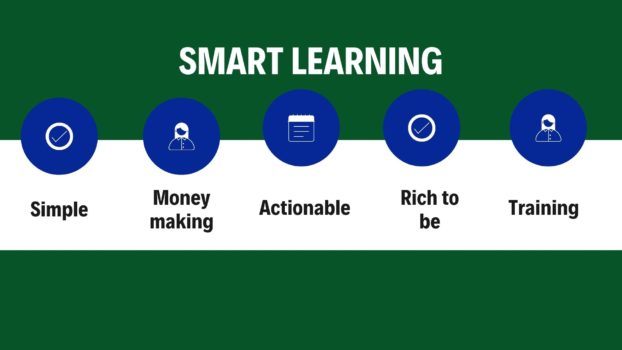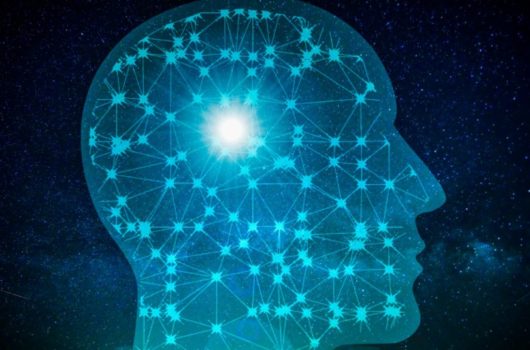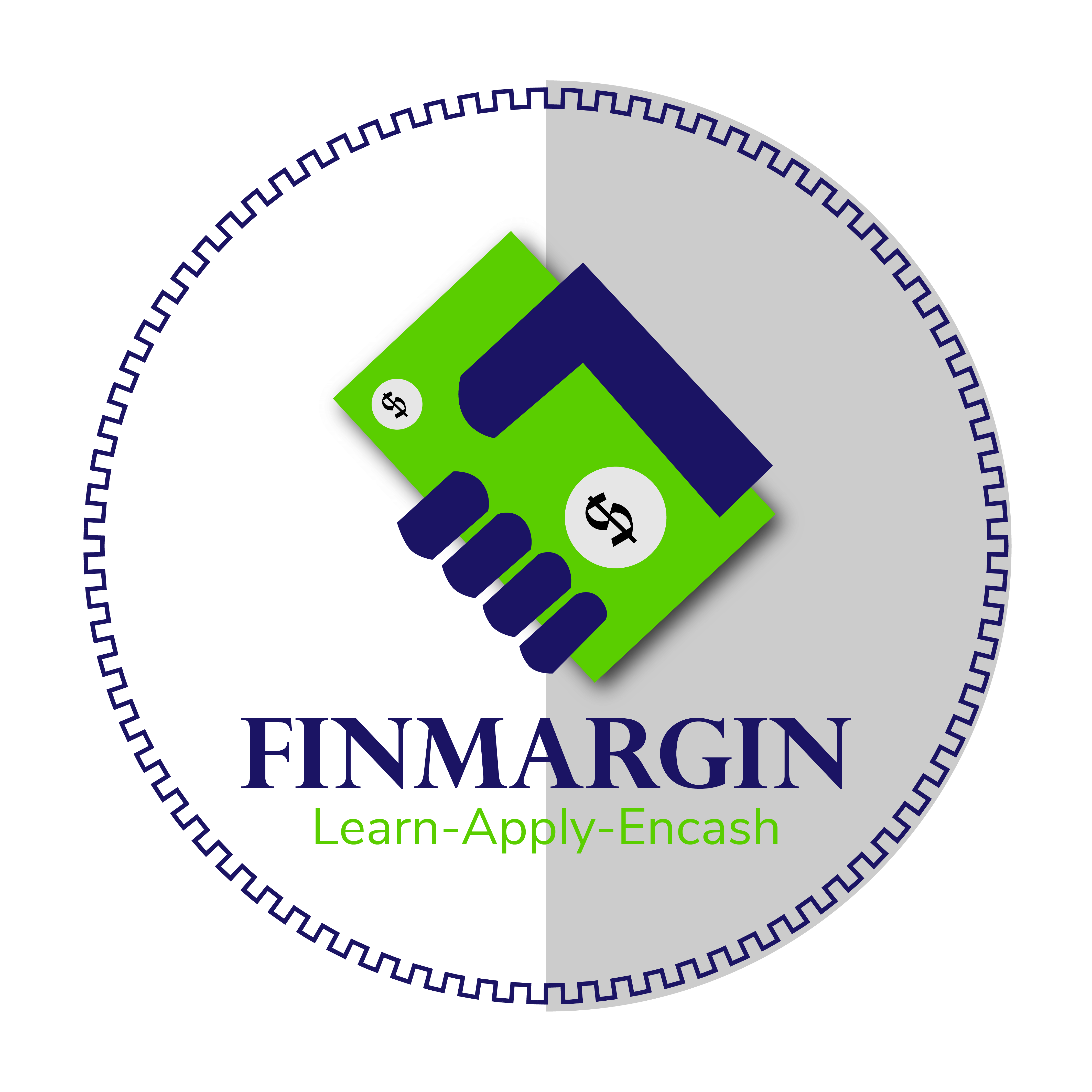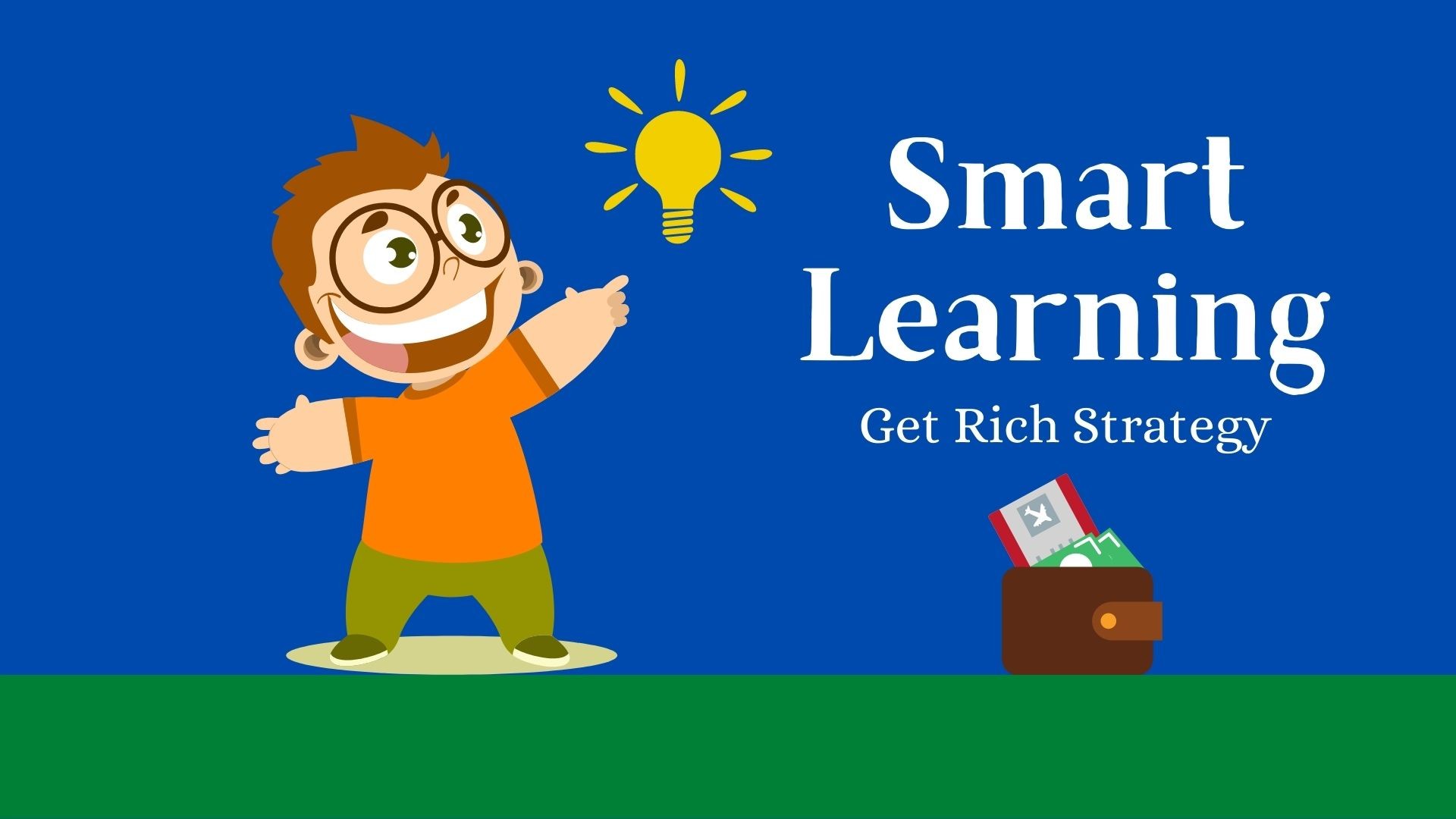Breaking your head to memorize lessons for your exam? Faced trouble while clearing an interview because of not being able to give prompt and correct answers? Unable to get a promotion because of tough competition? All these are linked to one problem of old learning methods which pushes you to learn hard rather than learn smart. Smart learning is the ultimate solution to all the above-listed problems. Just change the way you learn and see how you change the way you earn.
Table of Contents
What is Smart learning?
Smart learning is a concept of learning and not memorizing things as opposed to hard learning. Hard learning focuses on memorizing or mugging up words and knowledge that memory retains for a limited time. It focuses on learning driven by curiosity. The techniques used in smart learning helps in acquiring knowledge and retaining it for a longer time. It helps one to have an upward learning curve while making use of the knowledge learned to the best of your advantage. It depicts new-age learning where we need to work smart rather than work hard to achieve our goals. Smart learning and smart working go hand in hand. So why wait, let us know what are the methods of Smart learning and apply them in our lives right from today.
S- Simple M – Money making A – Actionable R – Rich T – Training.

Methods of Smart Learning:
Ever been jealous of someone’s growth? Others make you feel worthless? Other’s success may sometimes make you feel low and worthless, but just deep dive and you would see that the other person was just smart enough to make the things work for him. On the other hand, you did try your best but you were too hard on yourself. Smart learning was effectively used by your competitor leading to smart work whereas you were stuck on hard learning and hard work. Smart learning is a must needed integration, especially in our educational system.
Below are the methods or techniques of Smart learning :
- Ask Questions to Learn
Do not blindly accept statements told to you even if they are written in your syllabus books or told to you by your parents or by “Google”. Question them Why, What, Where, How, and When? You have the right to cross-question, to understand things better. Questions arouse curiosity and answers quench your curious thirst. This way you tend to remember for a longer time and you just don’t mug up things rather understand it with logic.
- Observe and Interact
Smart learning involves observing things, people, and situations around you. It’s like keeping your eyes and ears open and interacting with your surroundings. Observing helps you to imbibe and inculcate a lot. You gain experience along with knowledge. The more you interact the more you understand the logic or reason behind things. It opens you to the ocean of knowledge.
- Relate
After you are exposed to a lot around you, it’s time to start relating everything you have learned so far. Simple learning is a slow and steady process of acquiring knowledge and relating the knowledge to their daily lives. Relating things is a very important step as it helps you to brainstorm, think logically. Relate every theory learned, or every thesis to practical lives and see if it makes sense to you.
- Create MNEMONIC
Once you have started relating things, you need to create MNEMONIC. MNEMONIC is a set of letters or patterns to relate things for easy remembrance. This technique is an important step of Smart learning. Using MNEMONIC wherever possible will save you time, and energy to remember important details in no time.
Example – To remember how many colors are there in a rainbow we use MNEMONIC as VIBGYOR to remember the colors of the rainbow which are violet, indigo, blue, green, yellow, orange, and red.
Similarly, you may create various MNEMONICS to remember things. Like if you have to remember the accounting rules then you may use below MNEMONIC:
Personal account – Debit the receiver and Credit the giver as “Dog races, Cat gazes” where Dog represents Debit, and Cat as credit.
Real account – Debit what comes in and Credit what goes out. “Dog wags tail when someone comes in, Cat screams when someone goes out.” Where Dog represents Debit, and Cat as credit.
Nominal account – Debit all expenses and losses and credit all incomes and gains. ” Dogs carry expenses, which may lead to losses, whereas cats save income and lead to gains. Where Dog represents Debit, and Cat as credit.
- Apply Learnings
Smart learning emphasizes applying the knowledge earned. Practical application of learnings will help you solve real-life problems. The biggest problem with hard learning is that since it is forced thus practical application of learning is completely ignored. It is more about exploring ways to monetize the skills and knowledge earned.
- Monetizing skills
Smart learning’s end result is making money out of the learnings. Any skill learned can be monetized. There is a market for any and every skill that can help out others in solving or fixing their problems. Thus, monetizing is important, firstly it keeps you motivated, helps you to achieve financial freedom and at the same time helps you with improving your skillsets.

How Smart learning will make you successful and rich?
Smart learning opens up room for various opportunities to monetize your acquired knowledge. Let us understand how to use them?
- Develop skills using smart learning methods – Smart learnings will help you develop and inculcate learning habits.
- Identify market for the skills– Check which skills need to be focused on to identify markets and sell skills.
- Sell your skill to make money– It’s time to sell your skills and make money so get set go.
- Work smart, not hard- Gone are those days when working hard was required, with smart learning work smart and get the desired results.
Ways to become successful and rich by using smart learning methods:
- Get a high paid job
Practicing smart learning techniques will equip you to acquire skill sets that have huge demand in the corporate world. Getting screened for high-paid jobs, cracking technical rounds, and personal interview rounds will become much easier. Negotiating higher for your skills will help you get the right money.
- Become an entrepreneur
Smart learning methods are widely used by entrepreneurs starting their startups to make their skills and business scalable. Solving real-life problems is what a profitable business survives on while multiplying money in its journey. Why wait do your research and take the lead now.
- Social media influencer
Keep building your social network, and there you go, you have the masses to sell your skills.
Monetizing is not a problem once you know how to do it and where to start. Sell your products or services, or earn from affiliate marketing. The sky is the limit for you to keep growing and keep earning. YouTube, Facebook, Instagram, and whatnot are the futures.
- Stock market investor
Many stock market traders have used these learning methods to increase awareness, and memory retaining power. Play along with the stock market and extract money out of it. If not intraday, stay tuned for long-term investing and see the magic of compounding.
- Blogger
If writing is your skill, then do not let it waste. Pick up the laptop and start writing blogs. Become a blogger and start earning using these methods. Blogging is still an untapped market in India, however, in foreign countries, it’s a known profession. Let people know your thoughts and earn on the way.

Smart learning tricks with examples
Smart learning tricks are techniques and strategies that can help you learn more effectively and efficiently. Here are some smart learning tricks with live examples in detail:
- Active Recall:
- Active recall involves actively stimulating your memory by trying to remember information rather than passively reviewing it.
- Example: When studying for a history test, cover your notes and try to recall key events or dates. Then, check your notes to see how accurate your recall was.
- Spaced Repetition:
- Spaced repetition is a technique that involves reviewing material at increasing intervals over time to improve long-term retention.
- Example: Use flashcards and review them regularly, increasing the time between reviews as you become more confident in your knowledge.
- Interleaved Practice:
- Interleaved practice involves mixing different topics or subjects in your study sessions to enhance learning and retention.
- Example: Instead of dedicating an entire study session to one subject, alternate between math problems, language exercises, and science questions during your study time.
- Mnemonic Devices:
- Mnemonic devices are memory aids that help you remember information through associations or acronyms.
- Example: To remember the order of the planets from the sun, use the mnemonic “My Very Educated Mother Just Served Us Noodles,” where the first letter of each word corresponds to a planet (Mercury, Venus, Earth, Mars, Jupiter, Saturn, Uranus, Neptune).
- Visualization:
- Visualization involves creating mental images or diagrams to help you understand and remember complex concepts.
- Example: When learning about the water cycle, imagine the process in your mind and draw a simple diagram to visualize how water evaporates, condenses, and precipitates.
- Teaching Others:
- Teaching someone else what you’ve learned can reinforce your understanding and help you retain the information.
- Example: Explain a difficult math concept to a friend or family member, or create a tutorial video on a topic you’re studying.
- Chunking:
- Chunking is the process of breaking down large amounts of information into smaller, manageable chunks.
- Example: When memorizing a long sequence of numbers, group them into smaller chunks (e.g., 1234-5678-9101) to make them easier to remember.
- Analogies:
- Analogies involve drawing parallels between unfamiliar concepts and familiar ones to aid understanding.
- Example: To understand how a cell membrane works, compare it to a security checkpoint at an airport, where only authorized items are allowed to pass through.
- Mind Mapping:
- Mind mapping is a visual organization technique that helps you connect related ideas and concepts.
- Example: Create a mind map to outline the main topics, subtopics, and connections in a complex subject you’re studying.
- Gamification:
- Gamification involves turning your learning process into a game, which can make studying more engaging and motivating.
- Example: Use language learning apps that offer rewards, points, or competitions to make learning a new language more fun.
Remember that different strategies work better for different people, so it’s important to experiment with these techniques to find the ones that suit your learning style and preferences. Additionally, staying organized, maintaining a consistent study schedule, and taking breaks to avoid burnout are also crucial elements of smart learning.
Smart E Commerce Learning with Examples
Smart e-commerce, often referred to as intelligent or cognitive e-commerce, involves the use of advanced technologies such as artificial intelligence (AI), machine learning (ML), data analytics, and automation to enhance the online shopping experience for customers and optimize business operations. Here’s a detailed overview of smart e-commerce, along with examples:
1. Personalization:
- Definition: Personalization involves tailoring the shopping experience based on individual customer preferences, behavior, and demographics.
- Example: Amazon uses AI algorithms to analyze customer browsing and purchasing history, providing personalized product recommendations. This enhances user engagement and increases the likelihood of conversion.
2. Predictive Analytics:
- Definition: Predictive analytics leverages historical data and statistical algorithms to forecast future trends and customer behavior.
- Example: E-commerce platforms use predictive analytics to anticipate which products a customer might be interested in, optimizing inventory management and offering personalized promotions.
3. Chatbots and Virtual Assistants:
- Definition: Chatbots and virtual assistants use AI to engage with customers in real-time, answering queries and providing assistance.
- Example: Shopify’s Kit is an AI-powered virtual assistant that helps businesses with marketing tasks, such as creating Facebook ads and sending promotional emails.
4. Voice Commerce:
- Definition: Voice commerce enables users to make purchases using voice commands through virtual assistants or smart speakers.
- Example: Amazon’s Alexa allows users to add items to their shopping cart, check order status, and make purchases using voice commands.
5. Visual Search:
- Definition: Visual search enables users to search for products using images instead of text.
- Example: Pinterest Lens uses visual search technology, allowing users to take pictures of objects and find similar items available for purchase on the platform.
6. Dynamic Pricing:
- Definition: Dynamic pricing adjusts product prices in real-time based on various factors, such as demand, competitor pricing, and customer behavior.
- Example: Airlines and hotels often use dynamic pricing algorithms to adjust prices based on factors like time until departure or room availability.
7. Subscription Models:
- Definition: Subscription models offer customers regular, automated deliveries of products or services.
- Example: Dollar Shave Club offers a subscription-based service for razors, providing customers with a convenient and automated way to receive grooming products regularly.
8. Augmented Reality (AR) for Try-Before-You-Buy:
- Definition: AR technology allows users to visualize products in their real-world environment before making a purchase decision.
- Example: IKEA Place app lets users virtually place furniture in their homes using AR to see how it fits and looks before making a purchase.
9. Blockchain for Supply Chain Transparency:
- Definition: Blockchain technology ensures transparency and traceability in the supply chain, reducing the risk of counterfeiting and improving trust.
- Example: Walmart uses blockchain to trace the origin of products, enhancing the visibility of its supply chain and ensuring the authenticity of goods.
10. Social Commerce:
- Definition: Social commerce integrates social media platforms with e-commerce, allowing users to discover and purchase products within the social network.
- Example: Instagram Shopping enables users to browse and purchase products directly through the Instagram app.
11. Automated Customer Support:
- Definition: Automated customer support systems use AI to handle routine customer queries and issues.
- Example: Many e-commerce websites use chatbots to assist customers with order tracking, returns, and general inquiries.
12. Gamification:
- Definition: Gamification incorporates game elements, such as rewards and challenges, into the e-commerce experience to enhance user engagement.
- Example: Starbucks Rewards program gamifies the coffee-buying experience by offering points, levels, and exclusive rewards for loyal customers.
Conclusion:
Smart e-commerce is about leveraging technology to create a more personalized, efficient, and enjoyable shopping experience for consumers while optimizing business processes for merchants. As technology continues to advance, the integration of smart e-commerce features is likely to become even more sophisticated, providing new and innovative ways for businesses to connect with customers.
Where to find smart learning courses?
You do not have to look out when we are here to help you. All our online certification courses are based on smart learning techniques. Join FinMargin a one-stop smart learning destination for you. We ensure smart e-learning techniques and methods are taught to you in a smart online interactive classroom.
FunFact:
US K-12 Education market is going to increase to $10.8 Bn in 2026.

